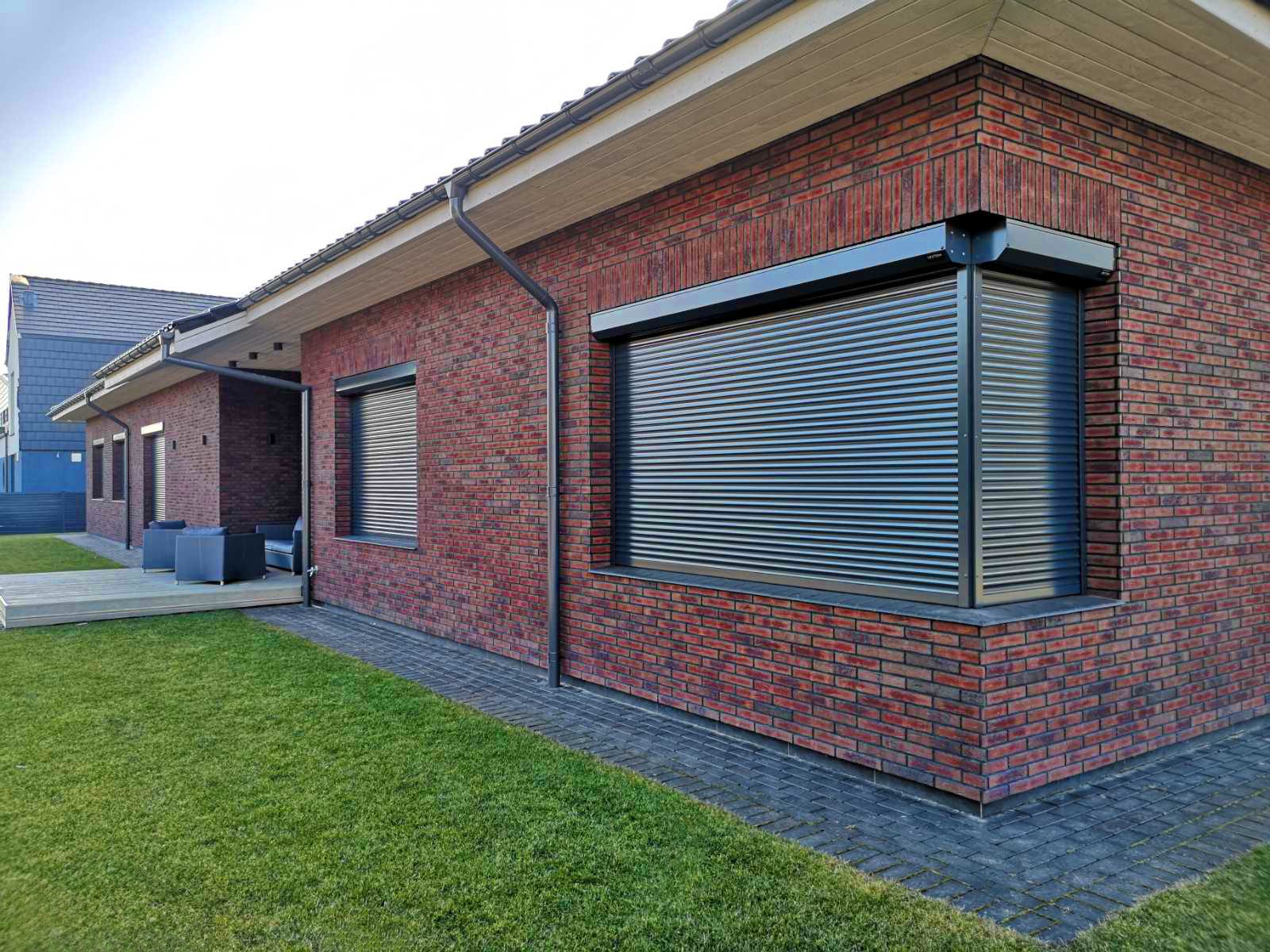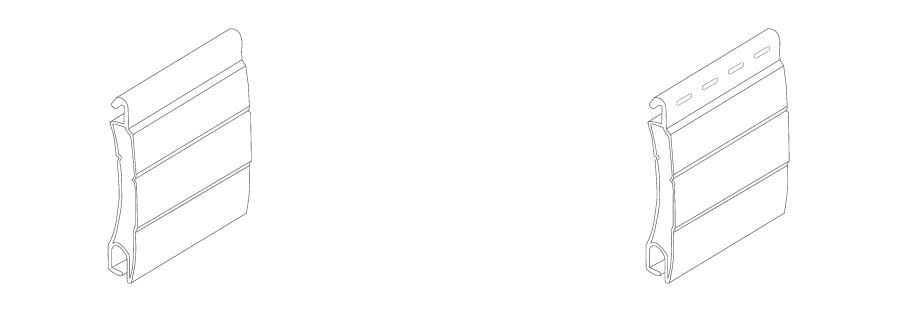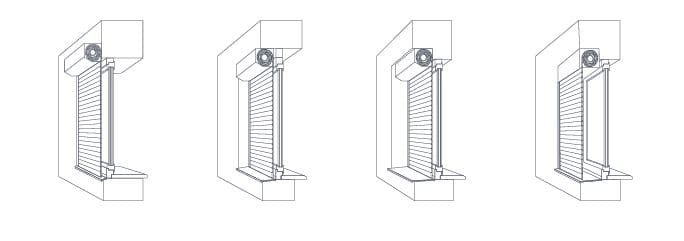Technical information
TYPES OF ROLLER SHUTTERS
Standard roller shutters fully cover windows, block light, and provide effective thermal and acoustic insulation. They help maintain optimal indoor temperatures in both summer and winter, making them suitable when indoor comfort and energy efficiency are priorities.
Perforated (VISION) roller shutters feature a lighter construction – the perforations in the profiles allow daylight to pass through, ensure air circulation, and give the facade a modern appearance. However, due to the perforations, they offer lower thermal insulation and are more suitable when light transmission and visual lightness are desired.
COMPONENTS
Roller shutters consist of a slat profile, a housing in which the slats roll up, a tube inside the housing, guide rails, and a control mechanism. These shutters can be mounted on the window frame, within a recess, on the recess, on the wall, or integrated into the window frame.
The height and thickness of the moving slats (curtain) are important for roller shutters. Larger and thicker slats result in stronger, more durable shutters. This type of roller shutter meets Class III wind resistance standards.
MECHANISM COLORS (housing, guide rails, bottom profile, slats): white, gray, anthracite, brown.
ALUMINUM PROFILES
Two types of aluminum profiles are used – classic “warm” profiles with a polyurethane core, and extruded aluminum profiles – strong and durable.
Aluminum is mechanically robust, weather-resistant, and does not rust. All components are painted, providing additional mechanical protection, the desired color finish, and better integration with the building’s color scheme.
Polyurethane is currently the building material with the best thermal insulation properties, with a thermal conductivity of 0.021 W/mK – approximately 40% lower than commonly used insulation materials such as mineral wool or expanded polystyrene (thermal conductivity 0.037 W/mK). Therefore, polyurethane of the same thickness is 40% more thermally efficient than mineral wool or polystyrene foam.
A layer of stationary air forms between the roller shutters and the window glass, acting as an additional thermal insulation layer. If the interior of the shutter slats is filled with polyurethane instead of being hollow, this provides additional mechanical strength, enhanced thermal insulation, and improved acoustic insulation.





![Profilis 55N/13 antracitas [120] RAL7016](https://dextera.lt/wp-content/uploads/2021/03/13-Antracitas-RAL7016-5-150x150.jpg)
![Profilis 55N/09 rudas [120] RAL8014](https://dextera.lt/wp-content/uploads/2021/03/rudas-150x150.jpg)
![Profilis 55N/03 pilkas [120] RAL7038](https://dextera.lt/wp-content/uploads/2021/03/02-Pilka-RAL7038-5-150x150.jpg)
![Profilis 55N/01 baltas [120] RAL9016](https://dextera.lt/wp-content/uploads/2021/03/01-Balta-RAL9016-5-150x150.jpg)
![Profilis 45N/13 antracitas [240] RAL7016](https://dextera.lt/wp-content/uploads/2021/03/13-Antracitas-RAL7016-4-150x150.jpg)
![Profilis 45N/03 pilkas [240] RAL7038](https://dextera.lt/wp-content/uploads/2021/03/02-Pilka-RAL7038-4-150x150.jpg)
![Profilis 45N/01 baltas [240] RAL9016](https://dextera.lt/wp-content/uploads/2021/03/01-Balta-RAL9016-4-150x150.jpg)
![Profilis 44N/13 antracitas [96] RAL7016](https://dextera.lt/wp-content/uploads/2021/03/13-Antracitas-RAL7016-3-150x150.jpg)
![Profilis 44N/03 pilkas [96] RAL7038](https://dextera.lt/wp-content/uploads/2021/03/02-Pilka-RAL7038-3-150x150.jpg)
![Profilis 44N/01 baltas [96] RAL9016](https://dextera.lt/wp-content/uploads/2021/03/01-Balta-RAL9016-3-150x150.jpg)
![Profilis 39N/13 antracitas [240] RAL7016](https://dextera.lt/wp-content/uploads/2021/03/13-Antracitas-RAL7016-2-150x150.jpg)
![Profilis 39N/03 pilkas [240] RAL7038](https://dextera.lt/wp-content/uploads/2021/03/02-Pilka-RAL7038-2-150x150.jpg)
![Profilis 39N/01 baltas [240] RAL9016](https://dextera.lt/wp-content/uploads/2021/03/01-Balta-RAL9016-2-150x150.jpg)
![Profilis 84/03 pilkas 7m [35] RAL7038](https://dextera.lt/wp-content/uploads/2021/03/02-Pilka-RAL7038-1-150x150.jpg)
![Profilis 56/03 pilkas 7m [35] RAL7038](https://dextera.lt/wp-content/uploads/2021/03/02-Pilka-RAL7038-150x150.jpg)